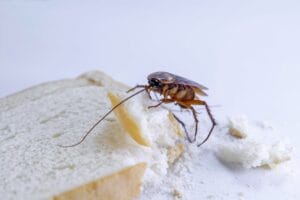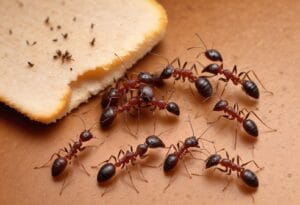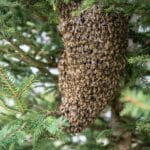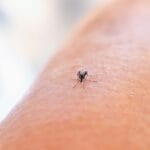Have you ever scratched your head wondering why your home is a hotspot for bugs and critters, even though you’ve tried everything to keep them away? Knowing what goes on in the mind of pests is key to keeping them out. Let’s take a look at what makes your home so appealing to them.
Summary
- Pests are drawn to homes because of the easy availability of food, water, and shelter.
- Ants, cockroaches, rodents, termites, and bed bugs are some of the most common household pests.
- Keeping your home clean, especially the kitchen, is crucial for keeping pests away.
- Sealing off entry points and managing moisture levels can help prevent infestations.
- Regular inspections and the use of eco-friendly deterrents are important for maintaining a pest-free home.
Creating a Pest-Free Home: Starting Your Journey

Imagine a home where the only buzzing you hear is from the bees in your garden and the only creatures scurrying around your kitchen are your pets. This isn’t an impossible dream. Today, I’m going to walk you through how to turn your home into a fortress against these tiny invaders, giving you peace of mind and a pest-free living space. It all starts with understanding why these creatures are attracted to your home and taking steps to make your home less appealing to them.
Meet the Usual Suspects: Everyday Household Pests

To protect our homes, we first need to identify our adversaries. The usual culprits are ants, cockroaches, rodents, termites, and bed bugs. Each of these pests has unique reasons for intruding on your home, but they all share one objective: survival. Your home offers them the essentials of life, making it an attractive destination for infestation.
“Prevention is better than cure.” This saying is particularly relevant when it comes to pest control. By knowing what attracts pests to your home, you can take steps to stop them from moving in.
Ants: The Unending Parade
Ants are social insects that have a preference for sweets and proteins. They’re drawn to anything sticky, crumbly, or oily. That tiny juice splash you missed on the counter? It’s like a beacon for ants. But it’s not just food; they’re also looking for water and a comfortable nest for their colony. Learn more about pest-proofing your home to prevent these unwelcome guests.
Cockroaches: The Indestructible Urbanites
These resilient pests can adapt to almost any environment, but they have a preference for warm, damp areas with an abundance of food sources. Crumbs, spills, and even pet food can turn into a banquet for these unwanted guests. They’re also known to stow away on bags and boxes, so be careful about what you bring into your house.
Rodents: A Chewing Dilemma
Rodents such as mice and rats are looking for more than just a meal; they need a secure location to reproduce. They can fit through the tiniest of cracks and once they’ve made their way in, they’ll chew on anything, from cables to timber, posing a possible risk to safety. Furthermore, they are carriers of illnesses, making them a health threat in addition to being bothersome.
Termites: The Unseen Threat
Termites differ from other pests in that they are not attracted to your home for food, but rather for the cellulose found in the wood of your home. These pests can go unnoticed for long periods of time, during which they can cause extensive structural damage. Regular inspections are crucial to catch them before the damage is irreversible.
Bed Bugs: The Monsters Under Your Bed
Bed bugs are the true monsters under the bed, feasting on your blood while you’re fast asleep. They don’t care about filth or grime, but they are attracted to the carbon dioxide that you breathe out. These little bloodsuckers can stow away in luggage, clothing, or furniture, so be vigilant when you travel or bring used items into your house.
Chow Time: How Your Routine Welcomes Unwanted Guests

Our day-to-day actions can unintentionally lay out the welcome mat for pests. Even the tiniest lapse in cleaning or maintenance can send a message to pests that your home is a hotspot for infestations because of the plentiful food and water supplies.
The Temptation of Leftovers: Keeping a Clean Kitchen
- Clean your counters and floors every day to get rid of any crumbs or spills.
- Keep your food in containers that are sealed and put any fruit that is ripe in your refrigerator.
- Make sure to take out your garbage on a regular basis and use trash cans that have lids that fit tightly.
The Great Indoors: Entry Points that are not Sealed
- Look over the outside of your home for any cracks or holes, and seal them up with caulk or weatherstripping.
- Examine your windows and doors for any gaps, and fix any broken screens.
- Put in door sweeps to prevent pests from coming in under the doors.
Water Sources: Fixing Plumbing Leaks and Controlling Moisture
- Get rid of water sources for pests by fixing any leaky faucets and pipes.
- Use dehumidifiers in damp areas of your home like basements and crawl spaces.
- Make sure your home has good drainage to prevent water from standing.
Breaking the Cycle: Why Pests Love Your Home
It’s not just food and water that make your home the perfect place for pests. Pests are also looking for comfort and safety, places where they can hide, breed, and thrive without being disturbed. Understanding what kind of environments pests are attracted to is the key to breaking the cycle of them finding a safe haven in your home.
Messy Spaces: Hiding in the Cracks, Crevices, and Clutter
Clutter isn’t just an eyesore; it’s a paradise for pests. Those piles of old newspapers, boxes in the attic, and the mess in your garage are prime spots for rodents and bugs. They offer a labyrinth of hiding places and nesting material, making it hard to get rid of them once they’ve made themselves at home.
If you want to prevent pests from making your house their home, make sure to regularly clean up clutter and store things in tightly sealed plastic containers instead of cardboard boxes. Be especially vigilant in cleaning the small, hidden spaces around your house; these areas are often overlooked but can be critical in winning the war on pests.
- Use appropriate materials to seal cracks in walls and foundations.
- Trim back trees and shrubbery from your home to reduce access points.
- Minimize clutter and organize your storage areas to eliminate hiding spots.
“A tidy home isn’t just about appearances—it’s a crucial step in pest prevention.”
Warmth and Comfort: Why Pests Are Attracted to Your Heating System
When the temperature drops, your heating system becomes a beacon for pests seeking warmth. Rodents, in particular, are attracted to the heat and can wreak havoc by chewing through wires and insulation. To prevent these heat-seeking pests, make sure your heating system and ductwork are well maintained and have no gaps or holes where pests could enter.
The Attraction of the Outdoors: Gardens and Trash Cans
Your garden might be a source of personal satisfaction, but for pests, it’s a smorgasbord. Overgrown plants and stagnant water are like neon signs inviting bugs and other pests to make themselves at home. In the same vein, trash cans can become a pest magnet if they’re not handled correctly. Here’s how to make them less appealing:
- Maintain your garden regularly and ensure plants are spaced out to limit hiding spots.
- Dispose of yard waste on a regular basis as it can be a breeding ground for pests.
- Make sure garbage bins have lids that fit tightly and clean them periodically to remove any residue and odors.
By taking care of the areas surrounding your home, you can greatly reduce the likelihood of pests making their way inside.
Fortify Your Fortress: Steps to Prevent Pests

Being proactive in pest control is like installing a home security system—you create barriers and deterrents to keep pests out permanently. Instead of just responding to an infestation, you’re taking steps to make sure it never happens.
Be Your Own Knight in Shining Armor: Secure Your Home’s Entry Points
Just like burglars, pests are always looking for easy ways to break into your home. Even the smallest crack or gap can be an open invitation for them. To protect your home, you need to secure these entry points like a knight guarding his castle. Look for gaps around pipes, vents, and cables that enter your home and seal them up. Install mesh screens over vents and chimney openings. These small changes can make a big difference in keeping pests out.
The Cleanliness Campaign: How to Keep Your Home Pest-Free
Consistently cleaning your home is key to preventing pests. But it’s not just about cleaning every once in a while—it’s about keeping your home so clean that pests can’t survive. Here are some important tips:
- Consistently vacuum and dust to get rid of any potential food sources and allergens that pests can live off of.
- Avoid leaving dirty dishes in the sink overnight, as they can lure pests.
- Keep pet food sealed and don’t leave it out overnight.
Keeping up with these habits can drastically reduce the chances of pests deciding to make your home theirs. And, if you’re already battling pests, these measures will aid any treatment efforts, making your home less attractive to any stragglers trying to stay.
Green Thumb: Environmentally Friendly Pest Management
Choosing to use eco-friendly pest control solutions is not just a passing fad, it is a conscientious decision that benefits both your family and the planet. Natural repellents can be surprisingly potent and do not come with the same hazards as chemical pesticides. For example, diatomaceous earth can be utilized to fight off a variety of pests, while essential oils such as peppermint and eucalyptus are known to deter bugs. Introducing helpful predators, like ladybugs to control aphids, can also help maintain a natural equilibrium in your garden.
Keep in mind that the most important aspects of natural pest control are consistency and patience. These methods may take more time to show results, but they are sustainable and contribute to a healthier home environment.
FAQ: Tackling Your Worries

Pest control can bring up a lot of uncertainties about what works best, what’s safe, and what’s effective. We’ll tackle some of the most common worries to help you feel more secure in your plan to keep your home free of pests.
How frequently should I check my home for pests?
Regular checks are your best defense against pests. I suggest a comprehensive check at least once a season, as various pests can be more active at various times of the year. Pay particular attention to areas where pests are likely to enter or reside, such as kitchens, bathrooms, basements, and attics.
How can you tell if you have a pest problem?
There are a number of clear signs that pests may have moved in with you. Look out for droppings, evidence of nesting, damage to food packages, unusual smells, or the pests themselves. If you spot any of these signs, it’s time to do something about it.
Can I use DIY pest control methods?
DIY methods can be effective for minor infestations or as preventive measures. However, for larger or more stubborn problems, professional help might be necessary. If you choose the DIY route, ensure you follow instructions carefully and take all safety precautions.
Do pets play a role in bringing pests to your home?
Indeed, pets can unintentionally lure pests. Pet food and water dishes can serve as food sources for pests, and pet doors can offer easy entry. To reduce this risk, maintain cleanliness in pet feeding areas and think about putting in a pet door that only opens when your pet needs to use it.
Is it okay to use chemical pesticides, and are they safe to use?
Chemical pesticides can be a powerful tool in pest control when used properly. However, they should be used as a last resort due to potential health risks. Always follow the manufacturer’s instructions and consider the safety of children and pets before using these products.





